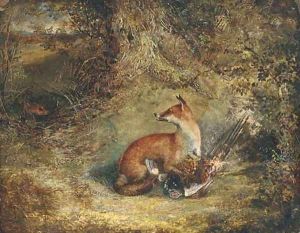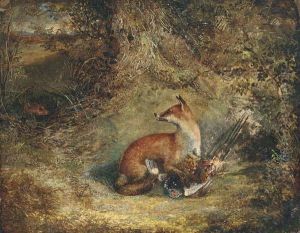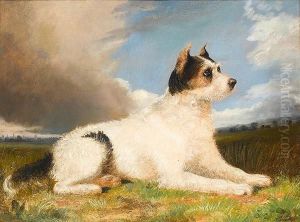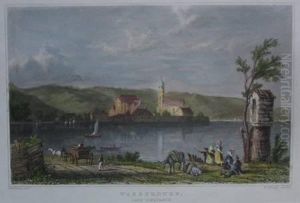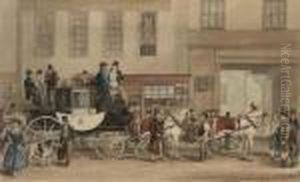George Havell Paintings
George Havell was an English painter known primarily for his works depicting landscapes and rural scenes. Born in 1793 in Reading, Berkshire, England, he was part of a family that was deeply involved in the arts. His father, Luke Havell, was a respected drawing-master and engraver, and his brother, William Havell, became a notable landscape painter as well.
George Havell's early life was spent developing his artistic skills under the guidance of his father and alongside his brother. This environment nurtured his talents, and he soon began to establish himself as a competent artist in his own right. His early works were influenced by the picturesque tradition, which was prevalent in England at the time, emphasizing the beauty of the natural landscape and often imbued with a sense of romanticism.
Although George Havell's career was overshadowed to some extent by the success of his brother William, who was associated with the 'Old Water-Colour' Society and gained significant recognition, George developed a regional reputation. He exhibited at the Royal Academy and other venues, but much of his life and work centered around Reading and the surrounding countryside. His paintings often depicted the Thames Valley and the landscapes of Berkshire and Oxfordshire, capturing the serene and idyllic qualities of rural England during the early to mid-19th century.
Throughout his life, George Havell continued to refine his technique and contributed to the local artistic community. His works, while not as widely known or celebrated as those of some of his contemporaries, are considered to be important records of the English landscape tradition during his lifetime.
George Havell died in 1871, leaving behind a body of work that, although it did not gain widespread fame, remains appreciated by art historians and collectors who have an interest in the period and the regional art of his time. His contributions to English landscape painting are part of the rich tapestry of the country's artistic heritage.
